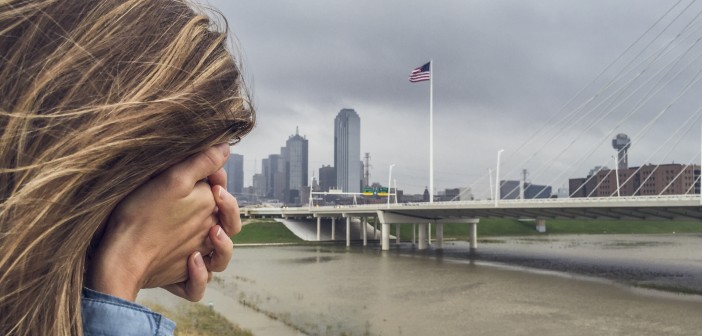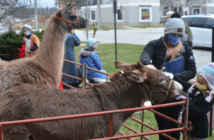The Easter Vigil service is all about remembering and reliving our story of salvation. Usually we do this within the confines of a sanctuary. But last year, the multi-site church I serve in Northwest Washington, DC, partnered with other churches to conduct an Easter Vigil in multiple locations. We came together to proclaim a story our whole city desperately needs.
This Easter Vigil allowed our church to connect with our city and face our Good Fridays head-on.
The betrayal, abandonment, violence, and death that Christ experienced on Good Friday are present-day realities for too many people in our midst.Given the racial and socio-economic geography of DC, some of our group members found themselves in parts of the city they had never been to before. If we are to pray and work for new life for all of God’s people, we must know first-hand the Good Fridays they experience.
So our Easter Vigil service was designed to lead us through places of need in our city, places we usually avoid or don’t even know about. The service explored the themes of creation, liberation, abundance, hope, and baptism, each in a specific location where death and the hope of resurrection are tangibly present.
- Creation. We started at our community food garden — standing barefoot in the dirt — to remember God’s creating work.
- Liberation. We went to a church located on a known prostitution track of our city. Standing in a parking lot littered with condoms, we read the Exodus story. One of their pastors spoke of the realities of sex and human trafficking. We prayed for all of these who are enslaved.
- Abundance. Reading the prophecy of the consummation of all creation in Isaiah 55, we joined a partner church in their table fellowship open to all housed and unhoused neighbors. The food came from our Campus Kitchen Project that reclaims food from area grocery stores and restaurants that would otherwise be thrown away. We prayed that the word God has given through us, and provided in food we have grown, is not wasted and does not return to God empty.
- Hope. Reading Ezekiel’s passage of dry bones, we stood next to the trash trap in a water way in a local park. It was the place where police had searched for the body of an eight-year-old girl abducted the previous year from the city’s shelter for homeless families.
- Baptism. We closed our vigil remembering our baptism along the Anacostia River — a riverbed so contaminated that brown bullhead catfish have developed cancer from simply touching the riverbed. We read Romans 6:3–11, remembering African American churches in our community who were once able to baptize new believers in the river. We remembered our baptisms and prayed for a cleansing of our sins and of the river, that it might once again be a sign of life.
This Easter Vigil allowed our church to connect with our city and face our Good Fridays head-on. We prayed with heart, soul, mind, and strength for God to bring a resurrection morning. And when it came, we were reminded of the hope that is ours. We serve a living God who brought forth life from death and continues to make the impossible possible. This is our prayer, and our work, for our city — for all those still in need of a resurrection dawn.
Related Resources:
- Putting Ourselves in the Places Where Life Happens by Keith Anderson
- Taking Church to the Community by Ann A, Michel
- Drive-Thru Ashes by Mack Strange
- 50 Ways to Take Church to the Community
- Taking Church to the Community Resource







